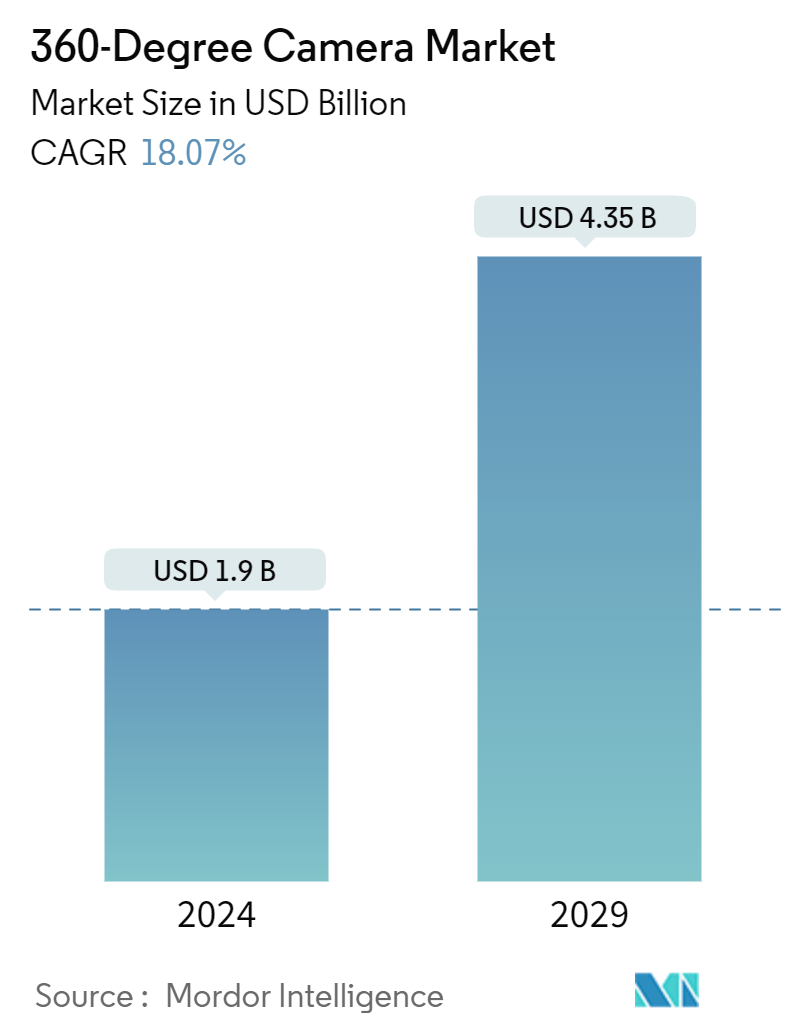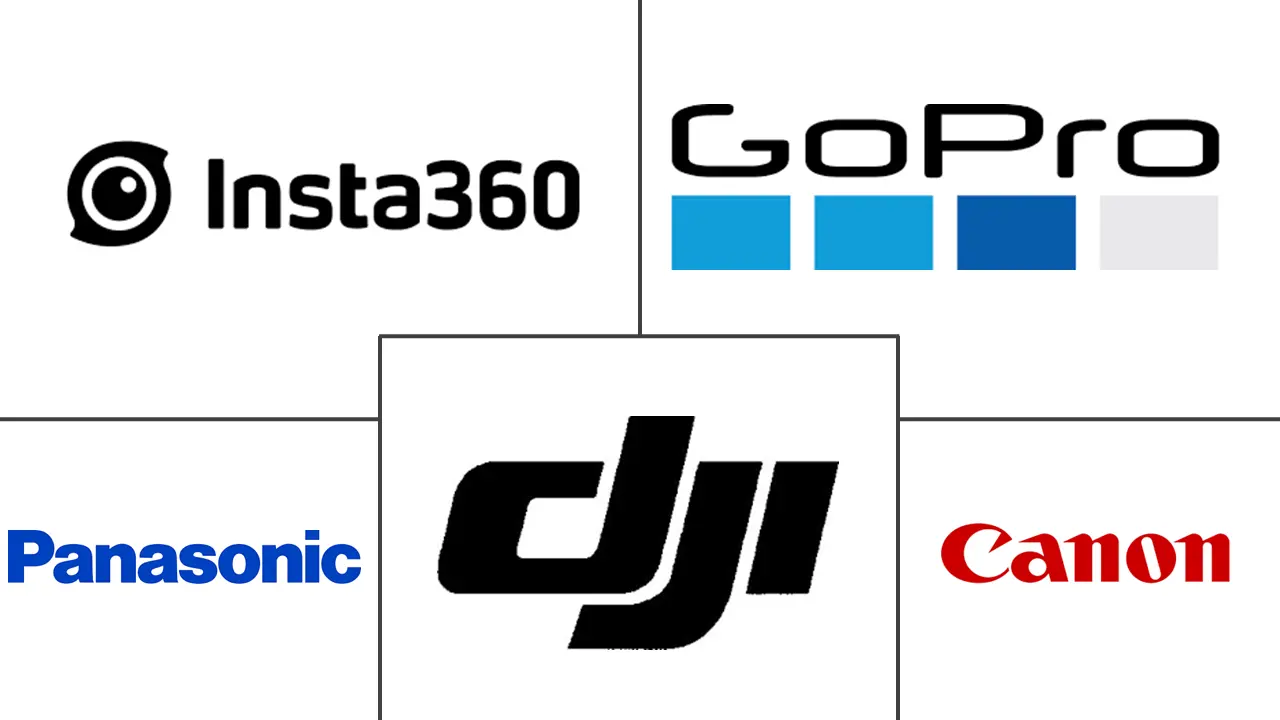Market Size of 360-Degree Camera Industry

| Study Period | 2019 - 2029 |
| Market Size (2024) | USD 1.9 Billion |
| Market Size (2029) | USD 4.35 Billion |
| CAGR (2024 - 2029) | 18.07 % |
| Fastest Growing Market | Asia Pacific |
| Largest Market | North America |
Major Players
*Disclaimer: Major Players sorted in no particular order |
360-Degree Camera Market Analysis
The 360-Degree Camera Market size is estimated at USD 1.9 billion in 2024, and is expected to reach USD 4.35 billion by 2029, growing at a CAGR of 18.07% during the forecast period (2024-2029).
- Camera technology, image processing algorithms, and lens design have seen significant advancements, leading to notable improvements in the image and video quality of 360-degree cameras. With enhancements like higher resolutions, superior low-light performance, minimized distortion, and better color accuracy, these cameras now excel at capturing high-quality, immersive content.
- AI-driven image and video processing algorithms empower 360-degree cameras with advanced capabilities. These include automatic stitching and blending of feeds for seamless content creation, real-time image stabilization and horizon leveling for smoother playback, and intelligent object tracking and recognition for enriched video analytics.
- Further, as an increasing number of industries recognize the advantages of 360-degree cameras, the market continues to expand, creating new opportunities for manufacturers, developers, and service providers. This diversification across various sectors significantly drives the growth of the 360-degree camera market. For example, the media and entertainment industry has been at the forefront of adopting 360-degree cameras. They've utilized these cameras for immersive content creation, virtual reality experiences, live event streaming, and cutting-edge advertising campaigns. With the rising demand for captivating and interactive content, this industry continues to play a vital role in augmenting the growth of the 360-degree camera market.
- However, such cameras provide an all-encompassing view of their surroundings, raising significant privacy concerns. Their deployment in public areas, workplaces, or homes has sparked debates about potential infringements on individual privacy rights. In addition, these cameras generate vast amounts of data, including sensitive visual information, leading to concerns about data security and the risks of breaches or unauthorized access. To safeguard the privacy and security of this captured data, it's essential to implement robust data storage protocols, encryption methods, and stringent access controls.
- The IMF forecasts a drop in the global CPI inflation rate, predicting a decline from 5.8% this year to 4.4% in the coming year. A lower inflation rate bolsters consumers' purchasing power, which could elevate demand for discretionary items, such as 360-degree cameras. Additionally, this reduced inflation rate affects commodity prices and the costs of raw materials essential for producing these cameras. Consequently, this decline in inflation is poised to positively influence the purchasing capability of consumers, creating a favourable ecosystem for the studied market's growth.

